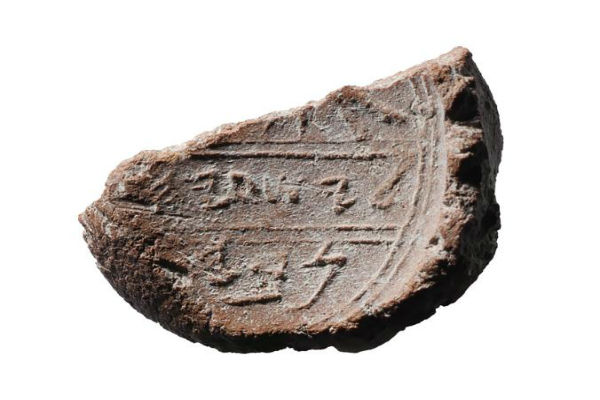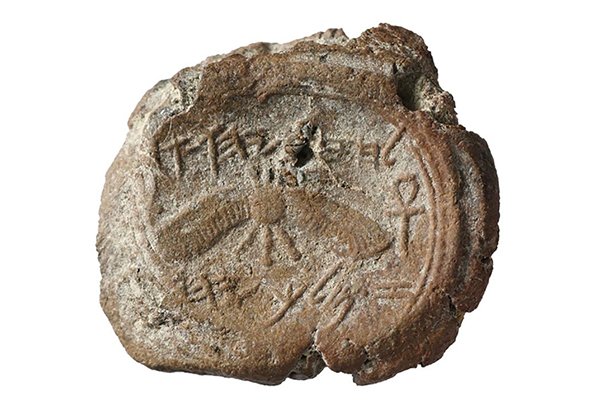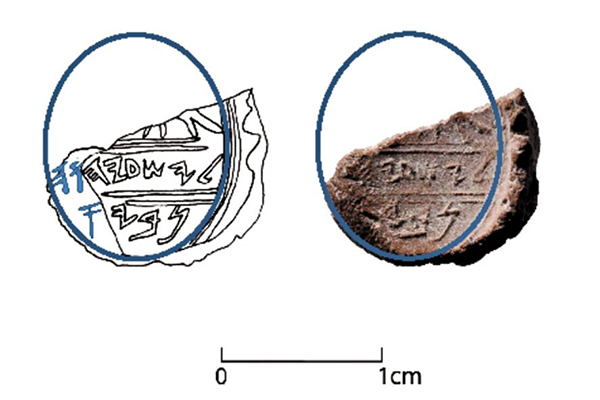Is the seal found in Jerusalem really of Isaiah?

During some excavations a 2,700 year old clay seal was found that could bear the words "Owned by the prophet Isaiah": if so, it would be the first reference to Isaiah outside the Bible
by Kristin Romey

The 2,700-year-old damaged clay seal discovered in an ancient iron age grave in Jerusalem could bear the name of the biblical prophet Isaiah. Photograph of Ouria Tadmor / Eilat Mazar
See also
Bibbia and archeology: between myth and reality
The tomb of Jesus was built by Constantine
According to a new article published in Biblical Archeology Review, a clay seal of the IIX century a. C. discovered during an excavation in Jerusalem could bear the name of the biblical prophet Isaiah.
The author of the article "Is the signature of the prophet Isaiah?" (Is This the Prophet Isaiah's Signature?), The archaeologist Eilat Mazar, suggests that writing in ancient Hebrew imprinted in the damaged oval seal that is more than a centimeter large, may once have had the meaning of "Owned by the prophet Isaiah".
If the interpretation of the characters imprinted on the seal of 2,700 years ago was correct, it would be the first reference to Isaiah outside the Bible. The Hebrew prophet is described as a counselor to Hezekiah, king of the kingdom of Judah, who reigned from the end of the 11th century to the beginning of the 3rd century BC. C.
The clay seal (bulla, in Latin) was found during the excavations conducted by Mazar in 2009 in the Ophel area, at the base of the southern wall of the Temple Mount in Jerusalem (in Arabic, Haram al-Sharif), together with others 34
seals. These had been recovered from small pits dating back to the Iron Age (1.200-586 BC), outside the Temple wall, used to supply baked goods to the royal court, which was razed to the ground by the Babylonians in 586 a. C during the destruction of Jerusalem.
The prophet Isaiah
On the seal is inscribed an inscription in ancient Hebrew containing the name Yesha'yah [u], the name Isaiah in Hebrew, followed by the word nvy.
As the seal is damaged at the nvy word, the archaeologist suggests that the inscription may contain more. If the Hebrew letter aleph was present as a result of nvy, the result would be the term "prophet", and therefore it is possible that the seal should have the words "Owned by the prophet Isaiah".
According to the archaeologist, to corroborate this interpretation there would be the archaeological context in which the seal was discovered.
In 2015, many international publications had spread the news of the discovery, during the excavations of Ophel, of a clay seal belonging to King Hezekiah. According to the new article, the seal of Isaiah was found only three meters from that of Hezekiah, during the same excavation made in 2009.
The bulla in clay with the seal of King Hezekiah was found in the same excavation area only three meters away from what is supposed to be that of Isaiah. Photograph of Ouria Tadmor / Eilat Mazar
The close relationship between the prophet and the king, which is based on the Bible, together with the proximity of the two finds "seems to leave open the possibility that, despite the difficulties resulting from the damage of the bulla, it is the seal on which the name of the prophet Isaiah, adviser to King Hezekiah, "explains Mazar.
Insurmountable obstacles?
As fascinating as this interpretation may be, Mazar admits the presence of some "important obstacles" in the identification of the seal, especially concerning the word nvy. Without the aleph letter at the end, nvy can probably be traced back to a simple person's name (often the name of the father) or place (the origin of the person in question).
Christopher Rollston, a professor of Semitic Languages at George Washington University, agrees on the possible criticalities deriving from the interpretation of nvy.
"The letter aleph is of fundamental importance to confirm that the second word of the inscription is" prophet. "But no aleph is read on the bulla and therefore that interpretation can not be confirmed", he declares.

The researchers suggest that the damaged part of the seal could have originally reported the Hebrew characters vav and h, in the middle register, and aleph in the lower register (in blue, the reconstructed parts of text). The complete wording impressed on the seal would therefore be "owned by the prophet Isaiah". Illustration of Ouria Tadmor / Eilat Mazar
Moreover, as Rollston observes, the definite article h is missing. And in most biblical references, titles are preceded by the article ("the prophet" is found, rather than simply "prophet"). "In summary, if the word were 'prophet', it should have been preceded by 'the', as in the expression 'the prophet Isaia'," he points out.
However, according to Mazar, the lack of the definite article is a problem concerning the interpretation of the seal, suggesting that the article may have been present originally in a damaged part over the word nvy or, citing other archaeological and literature examples , it may simply not have been there.
Furthermore, as Rollston notes, the Hebrew root yš 'is found not in Isaiah the prophet, but in nearly twenty different characters of the Bible. "There were many people with the name Isaiah or similar names made up of the exact same root," he notes. And if the word nvy was part of someone's father's name, surely that someone would not be the prophet, whose father, according to the Bible, was Amoz.
The eventual discovery of artifacts associated with both King Hezekiah and Isaiah - the biblical prophet who advised the king during the tumultuous period following the Assyrian conquest of the Kingdom of Israel and the continuing threat of the Kingdom of Judah to the south - "would represent exceptional opportunity to get to know this specific moment in the history of Jerusalem in depth, "says Mazar.
"Of course, the hypothesis that the one found is the seal of the prophet Isaiah is tempting, but it is not yet possible to affirm it with certainty", concludes Rollston.
To the question in your title, my Magic 8-Ball says:
Hi! I'm a bot, and this answer was posted automatically. Check this post out for more information.
Upvoted
Please upvote me
Thanka
@nasurunavas